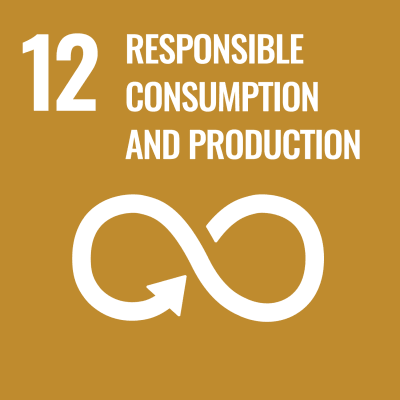-
Faculty of Science, Department of Applied Mathematics
- Professor
- Michiyuki WATANABE
- Research Field
Mathematics, Analysis, Mathematical Physics
- Keyword(s)
Partial differential equations, Scattering theory, Inverse problems
- Research theme
-
- Inverse problems for partial differential equations
- Nonlinear waves and partial differential equations
- Scattering theory and its relevance to the elastic wave equation for seismic waves
Outline of research activities



My research explores the mathematical connections between quantum mechanical scattering, nonlinear waves, and seismic waves to understand how mathematical methods and analysis can potentially gain new insights and develop novel approaches.
Finding and understanding the mathematical connections that exist between different fields and phenomena is what makes mathematical research so fascinating.- Desired cooperation
-
-
Faculty of Science, Department of Applied Mathematics
- Professor
- Shintaro KUROKI
- Research Field
Transformation groups, Toric topology
- Keyword(s)
Group action, (Equivariant) Cohomology, Graph
- Research theme
-
- Cohomological rigidity problem
- Application of GKM theory to geometry
- Classification problem of the spaces with group actions, etc.
Outline of research activities





In the word of mathematics, the symmetric structures on spaces are described by groups.
We call such symmetric space a space with group action.
My research interest lies in geometry and topology of the spaces with torus actions.
In this decades, the area so-called toric topology has been emerged.
Roughly speaking, toric topology can construct bridges among different areas (geometry, algebra and combinatorics) by the study of the spaces with torus actions.
In the near future, I would like to continue to study toric topology more deeply and challenge to solve open problems.
- Desired cooperation
-
-
Faculty of Science, Department of Applied Mathematics
- Professor
- Takashi OHE
- Research Field
Inverse problems
- Keyword(s)
Inverse problems, Numerical Analysis, Differential equations
- Research theme
-
- Mathematical and numerical analysis of inverse source problems of wave equations
- Mathematical and numerical analysis of inverse scattering problems
- Mathematical and numerical analysis of abnormal diffusion process
Outline of research activities
Inverse problem can be found in various fields, for examples, X-ray CT in medical fields, and non-destructive evaluations in engineering fields.In our laboratory, we make a mathematical analysis of inverse problems, especially, inverse source problems for wave equations and inverse scattering problems. We develop a numerical procedure to apply our mathematical results to practical problems.
We also study mathematical and numerical analysis for abnromal diffusion process in the soil.
- Desired cooperation
-
- Mathematical and numerical analysis for evaluation of wave sources or pollusion sources
- Mathematical and numerical analysis for non-destructive or non-invasive evaluation.
-
Faculty of Science, Department of Applied Mathematics
- Professor
- Yoshinori HAMAHATA
- Research Field
Algebra, Number Theory
- Keyword(s)
Dedekind sums, zeta functions, function fields
- Research theme
-
- Dedekind sums and their applications
- Special values of Dirichlet series
- Number theory in function fields.
Outline of research activities

There are analogies between algebraic number fields and function fields of one variable over finite fields. Number theory has developed on both fields. Using Dedekind sums which are special numbers, I study functions in number theory – zeta functions, L-functions, Dirichlet series, modular forms, and modular functions, for example. Using these functions, I also study numbers.

- Desired cooperation
-
- Function fields and finite fields.
-
Faculty of Science, Department of Applied Mathematics
- Associate professor
- Kimiko YAMADA
- Research Field
Moduli spaces in algebraic geometry
- Keyword(s)
moduli, birational geometry, singularities, Kodaira dimension
- Research theme
-
- moduli spaces of vector bundles on algebraic surfaces
- singularities of moduli
- Kodaira dimension of moduli
Outline of research activities



My field of expertise is algebraic geometry. There we consider a set of zero points (algebraic variety) of polynomials. For example, lines, circles, hyperbolas, and parabolas are algebraic varieties. The set of all geometric objects with certain properties is called a moduli space.
Moduli spaces of stable vector bundles on complex algebraic surfaces X are actively investigated as concrete examples of algebraic varieties.For an algebraic variety M, the Kodaira dimension is determined.
The Kodaira dimension of M is an important invariant related to the curvature of M. Also, there is the minimal model theory to understand higher dimensional varieties. In this theory, one simplifies a variety by exploding and contracting its subspaces to get a simple variety, called minimal model.I am interested in singularities, the Kodaira dimenson and the minimal model program of moduli space M.
(1) For large classes of surfaces X, I described the minimal model program of M by using words of moduli theory.
(2) I examined singularities of M, and in case where the structure of X is relatively simple, I showed that singularities of M are “good”. As a result, I calculated the Kodaira dimension of M.- Desired cooperation
-
-
Faculty of Science, Department of Applied Mathematics
- Lecturer
- Masateru INOUE
- Research Field
Topology
- Keyword(s)
Homotopy theory
- Research theme
-
- Hit problem
Outline of research activities

I am interested in hit problem. The Steenrod algebra acts on polynomial algebras over the field of two elements. Hit problem is to find a minimal generating set of polynomials over the Steenrod algebra. General linear groups act on polynomial algebras, and this commutes with the action of the Steenrod algebra. These are motivated by problems in topology, I consider this problem from various viewpoints.
- Desired cooperation
-
-
Faculty of Science, Department of Applied Science
- Professor
- Hideyuki HIGASHIMURA
- Research Field
Organic Chemistry, Polymer, Catalysis
- Keyword(s)
Aromatic Polymer, Redox Catalysis
- Research theme
-
- Development of new materials useful for society
- (1) Electric materials for the next 6G system
- (2) Production of green hydrogen
- (3) Secondary battery with ultra-high capacity
Outline of research activities



(1) Electric materials for the next 6G system
We have synthesized a new polymer with the lowest dielectric constant in all-aromatic hydrocarbon-type polymers, and are developing it for electric materials of the next 6G system.(2) Production of green hydrogen
The catalysts and materials for production of green hydrogen are studied such as artificial photosynthesis and electrolysis of water by renewable energy.(3) Secondary battery with ultra-high capacity
The new cathode materials with ultra-high capacity in lithium ion battery are developped to increase driving distances for EV.
- Desired cooperation
-
- Low dielectric insulator, Secondary battery cathode,
- Energy-related catalysts
- (Possible to collaborate on organic material research)
-
Faculty of Science, Department of Applied Science
- Associate professor
- Takafumi NIIHARA
- Research Field
Meteoritics, Mineralogy, Petrology, Cosmochemistry
- Keyword(s)
Solar System, Meteorites, Astrobiology, Shock metamorphism
- Research theme
-
- Evolution of the early Solar System
- Rock-Water interaction on Mars
- Impact history of the Solar System
Outline of research activities


The aim of the research is to clarify the origin and evolution of the Solar System using various types of meteorite samples. Analytical techniques I am using for the studies are optical microscope, scanning electron microscope, electron probe micro analyzer (EPMA) and Micro Raman spectroscopy etc. Our target bodies are all of the celestial bodies include Earth. I am also joining the deep space exploration. My E/PO activities are exhibitions of meteorites and public lectures.
- Desired cooperation
-
- Micro analyses for rock and minerals
- Astromaterials researches
- Exhibition and public lecture
-
Faculty of Science, Department of Applied Science
- Associate professor
- Yoichi TANABE
- Research Field
Physical properties of nano-materials, Condensed Mater physics
- Keyword(s)
Graphene, 3D curved surface,
- Research theme
-
- Elucidation of novel physical properties of 3D graphene
- Development of multifunctional carbon materials using local deformation of 3D curved surface
Outline of research activities

Graphene, integrated into the 3D nanoarchtecture with the smoothly interconnected curved surface, is promissing to clarify the novel properteis of the curved atomic layers adding to the amplifications of various material performance per unit projected area. We experimentally clarify the basic properties of the electrical transport on the 3D curved surface utilizing the high quality 3D graphene materials (so-called 3D nanoporous graphene). We also focus on the coexistence of the localized and itinerant electron properties originating from nitrogen-doping induced the local structural deformation of the 3D curved surface toward applications for the catalyst electrodes and thermoelectric materials using multifunctional electronic properties.

- Desired cooperation
-
- Evaluation of physical properties of carbon materials
-
Faculty of Science, Department of Applied Science
- Lecturer
- Youichi YAMAZAKI
- Research Field
Functional Analysis, Probability Theory, Integral Theory
- Keyword(s)
Probability, Integral, FunctionSpace, Limit
- Research theme
-
- Properties of integrals
- The relation of the meaning of probability and mathematical probability theory
- Limit theorem of various functions and stochastic fluctuations
Outline of research activities

The integral of a function is intuitively the “area under the graph”, but it is now generalized in many ways. And when functions “converge” the function in some sense, do their integrals also converge it? The question “is this true?” can be a yes or no. The answer depends on the situation. By clarifying the nature of the concept of integrals, I am trying to clarify the mechanism by which such things do or do not happen.
Also, probability and integration are closely related. The so-called “expected value” or “variance (standard deviation)” is the integral of a random variable, and stochastic integrals are used to analyze stochastically varying processes such as stock prices.
However, the concept of “probability” that currently prevails in mathematics does not match well enough the image that people have of “probability. For this reason, there is still a debate among philosophers as to what probability is. This also has a negative impact on probability in school education. By resolving this issue, the human way of thinking about probability should evolve.- Desired cooperation
-
- Probability debate
- Research on integrals
-
Faculty of Science, Department of Physics
- Professor
- Kaoru YAMAMOTO
- Research Field
Applied Physics of Organic Materials
- Keyword(s)
Organic Conductors, Ferroelectrics, Microspectrosocpy, IR/Raman spectroscopy
- Research theme
-
- Unconventional Ferroelectrics
- Organic Conductors
Outline of research activities

Conduction electrons in organic conductors behave simultaneously as quantum waves and classical particles. Due to the dual nature of these electrons, molecular solids demonstrate a variety of unconventional properties. Our group is investigating the possibility of finding a ferroelectric material that is polarized by a change of electron distribution, using techniques such as IR-Raman spectroscopy, nonlinear optics, and thermo-electric measurements. The unusual macroscopic polarization resulting from electron ordering could pave the way for future applications of organic solids in fast-switching devices and opto-electronic transducers.

- Desired cooperation
-
- Optical Materials
- Organic thin films
- Spectroscopy
- Microscopy
-
Faculty of Science, Department of Physics
- Associate professor
- Kazuaki MATANO
- Research Field
Condensed Matter Physics, Intelligent Informatics
- Keyword(s)
Superconductivity, New Materials, Artificial Intelligence, Generative AI
- Research theme
-
- Physical Property Research on Superconductors
- Development of New Materials
- Development of Generative AI
Outline of research activities


Our laboratory explores new materials using AI as a core research theme. Materials are made from combinations of elements in the periodic table, and the number of possible combinations is nearly infinite—many useful materials remain undiscovered. Some of these may include superconductors, solar cells, thermoelectric materials, or quantum devices.
Superconductors, for example, have zero electrical resistance and could enable lossless power transmission and highly efficient energy devices. However, known superconductors only work at very low temperatures. Discovering room-temperature superconductors remains a major scientific challenge.
Traditionally, material discovery has relied on researchers’ knowledge and intuition. Today, AI technologies such as generative AI and machine learning can analyze large datasets of material properties and predict those of unknown compounds. This data-driven approach aligns well with modern physics, especially statistical and quantum mechanics.
In our lab, we build AI models trained on material databases to predict which chemical compositions or structures may have desirable properties. Promising candidates are synthesized and evaluated through experiments such as X-ray diffraction and resistivity measurements. Feedback from these experiments is used to improve the AI models.- Desired cooperation
-
- Research on Superconducting Materials
- Development of Generative AI
- Physics Education
-
Faculty of Science, Department of Physics
- Associate professor
- Makoto WATANABE
- Research Field
Optical and Infrared Astronomy, Astronomical Instrumentation
- Keyword(s)
Astronomy, Imaging, Spectroscopy, Polarimetry, Adaptive Optics, Wavefront Sensing, Active Galactic Nuclei
- Research theme
-
- Adaptive optics and its applications
- Internal structure, formation, and evolution of active galactic nuclei, and the interaction with host galaxy
Outline of research activities

The spatial resolution of images observed by the ground-based astronomical telescope is limited because of the wavefront distortion suffered by the turbulence of the earth atmosphere. In order to overcome this problem, we are studying the adaptive optics and developing the astronomical instruments with adaptive optics, which corrects the wavefront distortion in real-time. The applications of this technology into biological and medical fields are also being studied.
In addition, we are studying the internal structure, physical condition, formation, and evolution of the active galactic nuclei, which are active objects emitting a huge energy from the very compact region by mass accretion into the super-massive black hole at the center of galaxy, observing them with time-variability monitoring, polarimetry, and adaptive optics.
- Desired cooperation
-
- Development of the telescopes, microscopes, and measuring instruments with adaptive optics
-
Faculty of Science, Department of Physics
- Lecturer
- Daisuke YAMAUCHI
- Research Field
Cosmology, Gravity theory
- Keyword(s)
Inflation, Dark Energy, Dark Ages
- Research theme
-
- Accelerated expansion of the Universe from a modification of general relativity
- Dark Universe explored by radio telescopes
Outline of research activities

The latest cosmological observations strongly suggest the surprising fact that the Universe is undergoing an accelerated expansion at two very different times, immediately after the birth of the Universe and at the present time. However, this fact is incompatible with the property that gravity is an attractive force. An interesting fact is that the latest observational results suggest that a modification of general relativity may be manifested in the very early and current Universe. I believe that the key to the search for essentially new observables is to observe the “Dark Ages” and “Cosmic Dawn”, in which information about the very early Universe is preserved. Through radio observations that can probe these epochs, I aim to unravel the detailed history of the Universe.

- Desired cooperation
-
- Studies on an accelerated expansion of the Universe in the context of modified theory of gravity
- Studies on cosmology with radio observations
-
Faculty of Science, Department of Physics
- Lecturer
- Tetsuro KUBO
- Research Field
Condensed matter physics, Magnetism, Strongly-correlated electron systems, Toporogical materials
- Keyword(s)
Nuclear magnetic resonance (NMR) spectroscopy, f-electron systems, Weyl semimetals
- Research theme
-
- NMR study of strongly-correlated electron systems and toporogical materials
Outline of research activities


Our research interests span various quantum phenomena such as magnetism, superconductivity, and multipolar ordering in strongly-correlated electron systems, as well as Weyl fermion excitations in what are known as topological Weyl semimetals. The nuclear magnetic resonance (NMR) techniques we use are advantageous because they allow us to investigate microscopic electronic states on the laboratory scale.
We also have a keen interest in developing a mobile and easily reproducible NMR spectrometer by leveraging the latest radio frequency technologies.

- Desired cooperation
-
- Research in condensed matter physics using NMR techniques
- Development of mobile NMR spectrometers
-
Faculty of Science, Department of Chemistry
- Professor
- Makoto SAKAI
- Research Field
Laser spectroscopy, Molecular spectroscopy, Microscopy
- Keyword(s)
IR super-resolution, Picosecond laser
- Research theme
-
- IR super-resolution microscopy for biological samples
- IR super-resolution molecular imaging
- Molecular orientation imaging
- Chirality mapping
Outline of research activities

Microscopes are very important tools for studying biological samples. However, most of the microscopes cannot measure the vibrational molecular imaging based on molecular information. At the moment, only two microscopes are measureable. One is the Raman microscope, and the other is IR microscope, those are complementary relations. But these are not perfect. Especially, the IR microscope has very low spatial resolution about 10 µm, because of the diffraction limit by the IR wavelength. This is a serious problem for a microscope. To solve this problem, we have developed IR super-resolution microscope with a sub-micrometer spatial resolution by using vibrational sum-frequency generation (VSFG) detection, and have reported the applications to various biological samples such as human hair, avian feather, living cells and so on. By using this microscope, we can observe not only the vibrational molecular image with high spatial resolution but also the molecular orientation and chirality images.

- Desired cooperation
-
- Functional inorganic/organic materials
- Biological molecules such as protein, sugar, lipid, cell etc.
-
Faculty of Science, Department of Chemistry
- Professor
- Masanori YAMADA
- Research Field
Biopolymer
- Keyword(s)
DNA, Environmental material, Enegry material. Bioplastic
- Research theme
-
- Removal of harmful compounds by DNA
- Preparation of environmental material consisting of biopolymer
- Utilization of biopolymer as anhydrous proton conductors
- Preparation of bioplastics consisting of sustainable materials
Outline of research activities





Salmon milt, defatted soybeans, crab and shrimp shells, and cowhide have been discarded as an industrial waste around the world. Therefore, DNA, soy protein, chitin/chitosan, and collagen, which are obtained from these materials, are sustainable resources. Our research using sustainable resources is as follows; 1) removal of harmful organic compounds; 2) selective accumulation of metal ion; 3) development of anhydrous proton conducting material; and 4) development of bioplastic with the biodegradable property.

- Desired cooperation
-
- Development of environmental material
- Development of anhydrous proton conducting material using biopolymer
-
Faculty of Science, Department of Chemistry
- Professor
- Minoru MITSUMI
- Research Field
Coordination chemistry, Solid-state chemistry
- Keyword(s)
Visible light-driven redox catalysis, Photocatalytic H2 production, Photocatalytic CO2 reduction, Porous coordination polymers, Porphyrin chemistry, Mixed-valence complexes, Magnetic, dielectric and conductive materials
- Research theme
-
- Visible-light-driven redox catalysts for photocatalytic H2 production and CO2 reduction
- Multi-functional materials based on coordination polymers with redox-active bridging ligands
- One-dimensional d-electronic metals based on partially oxidized one-dimensional dinuclear platinum complexes
Outline of research activities


Metal complexes can exhibit functions and physical properties not achieved by organic or inorganic compounds alone by appropriately selecting the central metal ion and designing the organic π-electron ligands surrounding it. The characteristics of these complexes enable effective sunlight harvesting and various catalytic reactions utilizing its energy. In our laboratory, we are developing visible light-driven redox catalysts for photocatalytic H2 production and CO2 reduction using metal-porphyrin complexes, which can harvest visible light and catalyze various reactions. In research on functions and physical properties, we are developing coordination polymers with unique magnetic and dielectric properties based on mixed-valence states using redox-active ligands. Furthermore, we are developing one-dimensional d-electroninc metals based on partially oxidized one-dimensional dinuclear platinum complexes that exhibit stable metallic states at low temperatures.
- Desired cooperation
-
- Visible light-driven redox catalysis based on metal complexes for photocatalytic H2 production and CO2 reduction
- Metal complexes in general
-
Faculty of Science, Department of Chemistry
- Professor
- Tetsuo IWANAGA
- Research Field
Physical Organic Chemistry
- Keyword(s)
Organic Synthesis, Organic Fucntional Materials
- Research theme
-
- Synthesis and Properties of Novel pi-Electron Systems
- Synthesis of Donor/Acceptor Arrays Based on Aromatic Bisimides
- Development of Organic Photovoltaic Cell Materials
Outline of research activities


Developing efficient organic photovoltaic cell devices have been increasingly important in the growing needs for inexpensive renewable energy. The molecular designs for organic photovoltaic materials required delocalized pi-electron systems and utility elements. To develop novel pi-electron systems for organic photovoltaic materials, we synthesized some novel donor/acceptor arrays with aromatic bisimide units, and measured their properties and self-assembly abilities. Recently, we also synthesized some N-atom containing pi-electron systems and revealed their photophysical properties and structures.

- Desired cooperation
-
- Development of OPVC and OFET Materials.
- New Type of Organic Synthesis
-
Faculty of Science, Department of Chemistry
- Associate professor
- Kan WAKAMATSU
- Research Field
Organic Chemistry, Photochemistry, Computational Chemistry
- Keyword(s)
Functional Material, Photoreaction, Electron Transfer, Quantum Chemical Calculation
- Research theme
-
- Development of new photoreaction using photoinduced electron transfer and its application
- Quantum chemical investigation of physical properties and reactivities of functional organic molecules
Outline of research activities


Our research theme is development of new photoreaction using photoinduced electron transfer and its application to syntheses of functional materials. In present, we are working on (1) investigation of photochemical syntheses of indole derivatives which are considered to the important alkaloids widely found in nature, and (2) development of efficient photochemical synthetic methods for quinone imine dyes and their application. Because these target compounds indicate characteristic redox behavior, we also consider applying them to functional materials such as an OLED material while adopting their expected physical properties evaluated by quantum chemical calculation.

- Desired cooperation
-
- Development of organic compound which functionality can be induced by photoreaction
- Quantum chemical derivation of physical properties and reactivities of functional organic molecules





